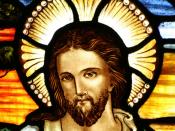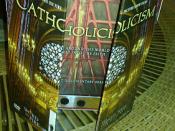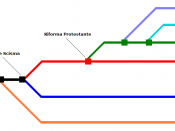Part One: Trends in identification and participation in churches.
Introduction
Graph 1: Major Religious Categories as a percentage of Australia's Populations
The main trends in religion in Australia between 1945 and 2001 are:
* The decline in Christian denominations as a percentage of the total population
* The increase in Non-Christian religions in Australian society
- Increase in Islamic, Buddhist, Hindu, and Jewish population
* The increase in people not identifying with any religion
* Church Attendance in all faiths as a result of age and religion
Christian Denominations
Graph 2: Religious Identification as a percentage of total Australian population
The major trend when referring to Christian denominations is the strong decline in membership percentages of the Australian population. Christianity reached the height of its popularity (during the period 1947- 2001) in 1954 at 89.5% . At this time, according to the earliest post 1945 census (1947) the most popular religion in Australia was Anglicanism, with approximately 39% of the population - well ahead of its nearest competitors Catholicism (20.9%)
and Methodist (11.5%).
Anglicanism has suffered the greatest decline of all Christian denominations, decreasing to 20.5%, a decline of 18.5%. As a result of this, Catholicism - despite having gained only 5.7% - has now become the most popular religion in Australia.
It is worth noting that the Methodist church is now a part of the Uniting Church in Australia, incorporating the union of the Congregational Union of Australia, the Methodist Church, and the Presbyterian Church . This is the likely cause for the Uniting church being one of the few Christian denominations to have experienced an overall increase in participants, as the Uniting church now appeals to a greater portion of the Australian public.
Graph 3: Identification with smaller religions
(Catholic and Anglican figures refer to the...


